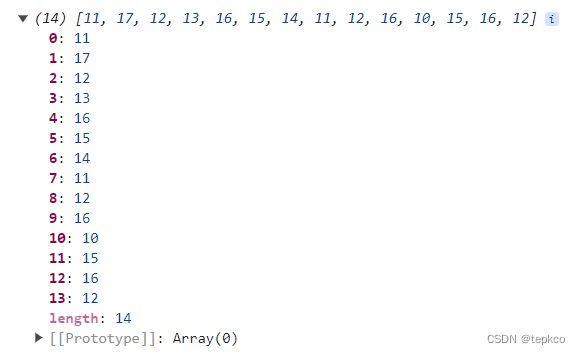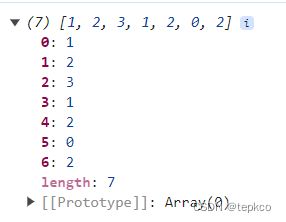记录js中循环遍历的四种方法
1. for
这个很基础
let arr = [1, 7, 2, 3, 6, 5, 4, 1, 2, 6, 0, 5, 6, 2];
for (let a = 0; a < arr.length; a ++){
console.log(arr[a]);
}2. forEach
let arr = [1, 7, 2, 3, 6, 5, 4, 1, 2, 6, 0, 5, 6, 2];
arr.forEach(item => console.log(item));该方法会遍历arr数组中的每一个元素,item则为遍历中依次取到的值。上面的代码的输出结果和第一个for循环的代码的输出结果相同,都是将数组arr中的元素打印一遍
3. map
map函数会返回一个新的数组,这个数组包含回调函数处理后返回的值
也就是说,map函数在遍历时,回调函数会将数组中的每个元素进行处理后再添加到新的数组中,然后再把这个新的数组返回给你
比如此时有这个arr数组
let arr = [1, 7, 2, 3, 6, 5, 4, 1, 2, 6, 0, 5, 6, 2];我们现在需要将数组中所有的数都加10,那么就可以这样写
let arr = [1, 7, 2, 3, 6, 5, 4, 1, 2, 6, 0, 5, 6, 2];
let newArr = arr.map(item => item + 10);
console.log(newArr);输出结果为
4. filter
filter函数会返回一个新的数组,如果回调函数返回的值为true,则将遍历的元素添加到新数组中,如果回调函数返回的值为false,则不会添加到新数组中。
同样对于这个arr数组
let arr = [1, 7, 2, 3, 6, 5, 4, 1, 2, 6, 0, 5, 6, 2];现在我们需要筛选出数组中所有小于4的数,那么就可以这样写
let arr = [1, 7, 2, 3, 6, 5, 4, 1, 2, 6, 0, 5, 6, 2];
let newArr = arr.filter(item => item < 4);
console.log(newArr);输出结果为

